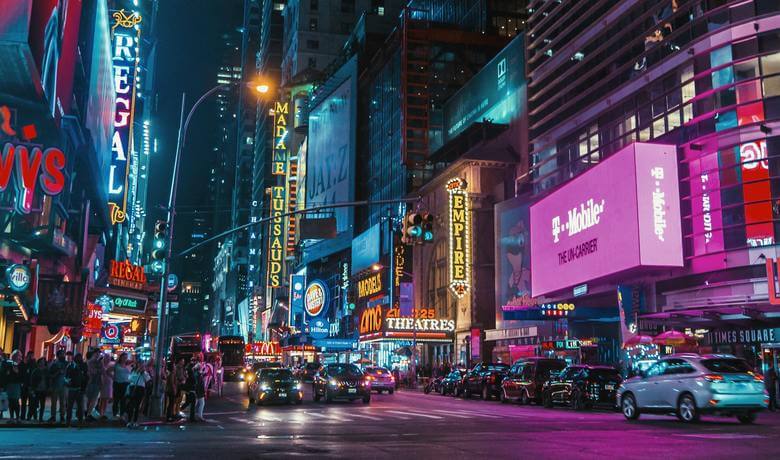Get news, updates, and insights delivered straight to your inbox.
Keeping Customers Engaged with Powerful Brand Experiences

Think about a time when you felt a positive connection with a brand. Maybe it was this morning when you opened Spotify and were exposed to some new favorite tunes thanks to the Discover Weekly playlist. Perhaps it was receiving a warm welcome from a Walmart greeter during your last visit. Regardless, these moments made a genuine impression on you as a consumer and shaped how you perceive that brand.
What Is Brand Experience?
To stand out from competitors and keep customers highly engaged, companies must innovate and differentiate themselves by delivering a powerful brand experience. Brand experience is about designing a sensory experience that brings a person into a lasting and meaningful relationship with a brand. These experiences build consumer awareness and often create brand-faithful customers, who continuously chase moments similar to that delightful first encounter with their favorite brands.
When strategizing how to foster powerful brand experiences, companies must remember that today’s customers are incredibly sophisticated when it comes to technology. Instead of being passive participants, they prefer to take an active role in the curation, creation, and ownership of content during a brand experience. Essentially, they want to collaborate with the brands they affiliate themselves with. To help foster this type of collaboration, brands should create opportunities for their audience to engage in a way that is both memorable and rewarding.
Brand Experience in Action
Companies in a variety of verticals have found success by prioritizing the creation of powerful brand experiences. Take Netflix, for example. In 2016, the streaming giant revitalized the popular TV show “Gilmore Girls” by turning more than 200 coffee shops across the country into replicas of Luke’s Diner – the show’s popular eatery – to promote its revival of the series. Similarly, Netflix organized pop-up events in 2018 to promote the fifth season of “Arrested Development” by letting fans take photos atop the famous stair car and Bluth’s frozen banana stand, creating memorable moments for fans.
Another example of a great brand experience in action is Coca-Cola’s #ShareACoke Campaign. In 2011, Coca-Cola replaced their traditional logo on one side of their bottles with the phrase “Share a Coke with” followed by a person’s name. The campaign grew extremely popular and was eventually rolled out to 80 markets worldwide. It turned average soft drink consumption into a highly personalized and shareable experience, and Coca-Cola coincidentally grew their sales for the first time in 10 years.
How to Boost Your Company’s Brand Experience
Creating a positive brand experience is what will keep your customers coming back for more. And while fostering this type of brand loyalty may seem like a daunting task, there are multiple steps a marketer can include in their branding strategy to fabricate a memorable experience for their target audience. Incorporate these three steps into your organization’s brand strategy:
1). Target a sensory response from your audience. As humans, our senses not only help us experience the world but they also remind us of significant moments in our lives. Your audience is human, so playing to their senses with brand-related stimuli will plant a positive memory in their minds about your brand that they will likely carry for years to come. A child who experiences the magic of Disneyland for the first time is sure to feel that same joy when they take their children to the theme park as an adult. Depending on your brand, you can prioritize a sensory experience that targets smell, taste, hearing, sight, or tactile sensations.
2). Develop brand experiences that are personalized on a deeper level. Unfortunately, so much personalization these days consists of simply switching out names in an email. However, this is not entirely what personalization is about. Content personalization is about providing targeted brand experiences that bring value to the customer. Spotify’s playlists – which become more personalized to the user the more they stream music – expose listeners to content that compliments their taste. Because every brand strives to create a personalized customer experience, you must go beyond the status quo to tailor and adapt your content for a specific prospect at each stage of the customer journey. This will not only help you enhance customer satisfaction by providing your audience with the right content at the right time, but it also increases the chance of sales to successfully target a potential customer.
3). Create content that evokes an emotional reaction. Having emotional representations stuffed into marketing campaigns is different than evoking emotions. In order to remain authentic, marketers should strive to take their audience on a journey that sparks certain emotions that they want the consumer to associate with their brand identity. This will allow you to connect with your customers on a deeper level. Pepsi did this well when they recreated their iconic 1992 Super Bowl commercial starring Cindy Crawford in 2018, evoking a sense of nostalgia for viewers who saw the original.
Build a Better Brand Experience
It’s not enough to have a stellar product or service these days. Brands have to elevate their marketing game and foster immersive experiences with their customers in order to build a lasting relationship. To promote this type of brand loyalty and stand out from competitors, strive to create powerful brand experiences that will keep customers coming back for more.
Learn how MarcomCentral solutions can empower you to build a better brand. And for more information on branding best practices, stay tuned to The MarcomCentral Blog.
You might also like


